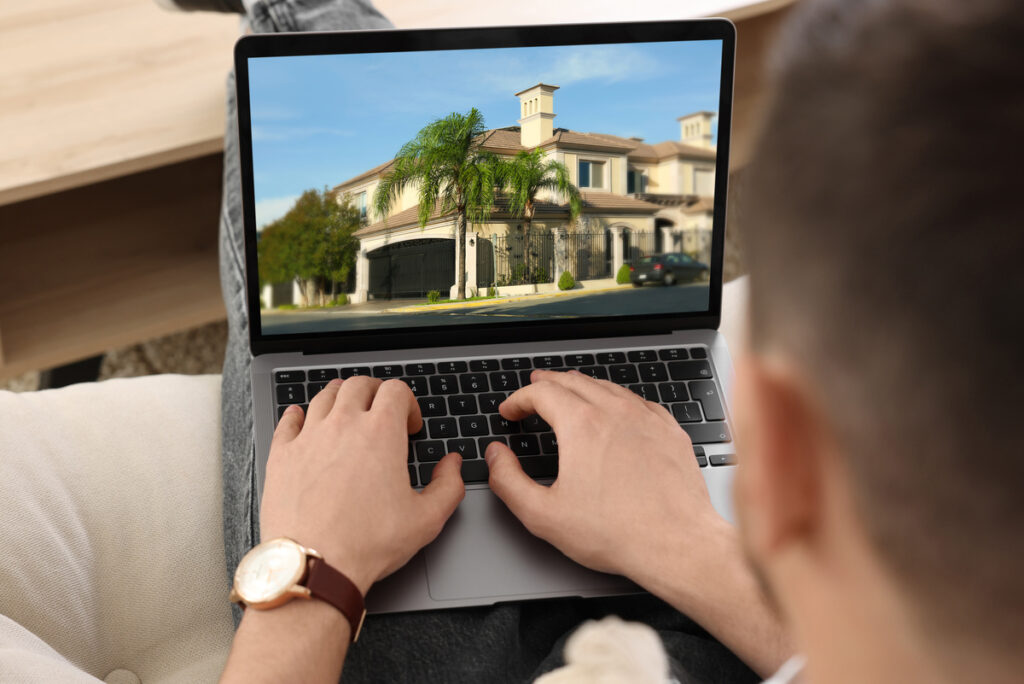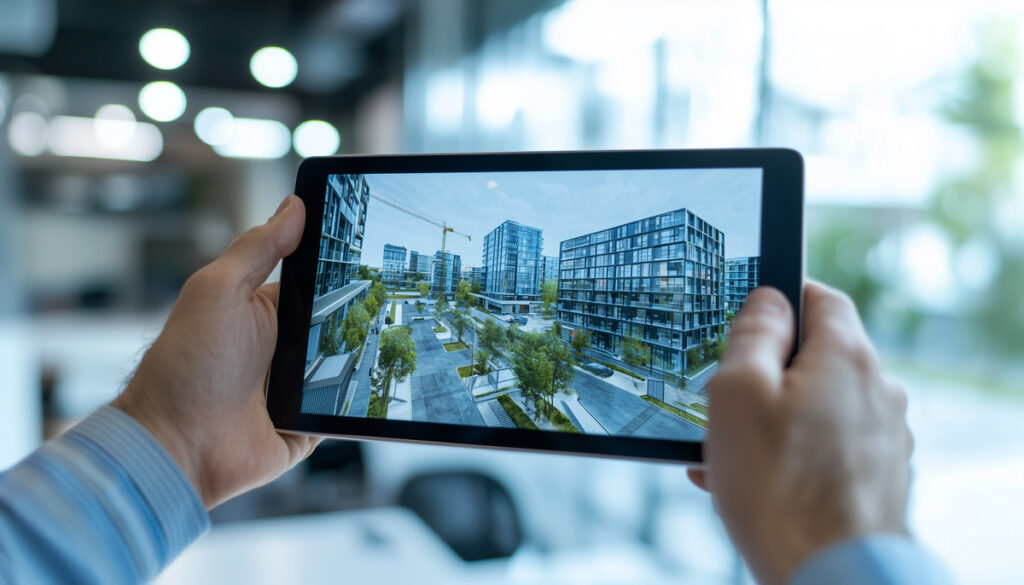Virtual tours have revolutionized the real estate industry, offering an immersive digital experience that allows potential buyers to explore properties remotely.
These interactive, 360-degree visual presentations provide a comprehensive view of spaces, combining high-resolution imagery, panoramic views, and sometimes even 3D modeling. The evolution of virtual tours in real estate has been rapid, driven by advancements in technology and changing consumer preferences.
From simple photo slideshows to sophisticated, interactive 3D walkthroughs, virtual tours have become an essential tool for property marketing. They offer convenience, accessibility, and detailed insights, transforming how buyers search for homes and how sellers showcase their properties. As the digital landscape continues to evolve, virtual tours are becoming increasingly integral to the real estate transaction process.
Transform Your Property Listings Today – Discover the Power of Virtual Tours with Corporate Capture!
The Rise of Remote Buying
Remote real estate transactions have gained significant momentum in recent years, accelerated by technological advancements and changing consumer preferences. This trend has been further amplified by global events like the COVID-19 pandemic, which necessitated alternative ways of conducting business.
The benefits for both buyers and sellers are substantial. Buyers enjoy increased convenience, accessing property information and virtual tours from anywhere, saving time and travel costs. They can explore more options and make informed decisions without physical visits. Sellers benefit from a wider pool of potential buyers, including out-of-state or international investors, potentially leading to faster sales and better prices.
This shift towards remote buying is reshaping the real estate industry, making transactions more efficient and accessible. It’s likely to continue evolving, with emerging technologies further enhancing the remote buying experience and streamlining the process for all parties involved.
Types of Virtual Tours
360-Degree Virtual Tours offer a comprehensive view of a property, allowing users to navigate through spaces as if they were physically present. These tours use a series of panoramic images stitched together to create a seamless, immersive experience. Users can pan, tilt, and zoom to explore every corner of a room, providing a realistic sense of the property’s layout and features.
Interactive Floor Plans take virtual tours a step further by combining 2D or 3D floor plans with clickable hotspots. These hotspots lead to detailed views of specific areas, offering a more structured exploration of the property. Users can easily understand the spatial relationships between rooms and visualize potential furniture arrangements or renovations.
Live Virtual Tours involve real-time video walkthroughs conducted by a real estate agent or property owner. These tours allow potential buyers to ask questions and request specific views in real time, creating a personalized experience. They’re particularly useful for remote buyers who want a more interactive and guided exploration of a property, combining the benefits of virtual technology with personal interaction.
Each type of virtual tour offers unique advantages, catering to different preferences and needs in the property viewing process.
Technology Behind Virtual Tours
Virtual tours leverage various cutting-edge technologies to create immersive experiences. Drone video recording provides stunning aerial views and exterior shots, offering a comprehensive perspective of properties and their surroundings. VR and AR technologies enhance interactivity, allowing users to explore spaces as if physically present, with AR overlaying digital information onto real environments.
3D scanning and modeling technologies, like LiDAR, create accurate digital replicas of spaces, enabling detailed virtual walkthroughs. These scans form the basis for 3D models used in tours.
Specialized software and platforms stitch together 360-degree images, integrate 3D models, and add interactive elements. They also enable features like hotspots, floor plan navigation, and information overlays. Platforms such as Matterport, TourWizard, and Kuula have become industry standards, offering user-friendly interfaces for both tour creation and viewing.
This combination of technologies allows for the creation of highly detailed, interactive, and engaging virtual property experiences.
Creating an Effective Virtual Tour
Key elements of a high-quality virtual tour include clear, high-resolution imagery, smooth navigation, and comprehensive coverage of the property. Interactive features like hotspots and informational overlays enhance the user experience. Accurate representation of spaces, good lighting, and attention to detail are crucial for creating trust with potential buyers.
Best practices for real estate agents include preparing the property thoroughly, and ensuring cleanliness and optimal staging. Agents should plan the tour route carefully, highlighting key features and addressing potential concerns. Providing context about the neighborhood and nearby amenities adds value to the tour.
Essential tools and equipment include a high-quality 360-degree camera, a sturdy tripod, and proper lighting equipment. For more advanced tours, 3D scanners or drones may be necessary. Software for stitching images, creating virtual walkthroughs, and adding interactive elements is also crucial. Many agents opt for all-in-one virtual tour platforms that offer both capture and hosting solutions.
Virtual Tours vs. Traditional Tours
Virtual tours offer a significantly different buyer experience compared to traditional in-person tours. They provide convenience and flexibility, allowing potential buyers to explore properties at their own pace and time, from anywhere in the world. While they lack the tactile experience of physical tours, virtual tours often offer more comprehensive views and detailed information.
For sellers, virtual tours are typically more cost-effective in the long run. They reduce the need for multiple in-person showings, saving time and resources. The initial investment in creating a virtual tour can lead to broader exposure and potentially faster sales.
Time efficiency is a major advantage of virtual tours. Buyers can view multiple properties quickly without travel, while sellers and agents save time by pre-qualifying interested buyers. This efficiency streamlines the entire process, benefiting all parties involved in the real estate transaction.
Stand Out in a Competitive Market – Learn How Corporate Capture Can Showcase Your Property with Stunning Visuals!
Benefits for Remote Buyers
Remote buyers enjoy numerous advantages when utilizing virtual tours in their property search. The convenience and accessibility of virtual tours allow them to explore listings from anywhere, eliminating the need for travel and enabling them to view multiple properties in a short time.
Additionally, virtual tours provide detailed property insights, offering comprehensive views of spaces and features that traditional photos may not capture. This immersive experience helps buyers make informed decisions without physically visiting each location.
Furthermore, remote buyers benefit from significant time and cost savings, as they can avoid travel expenses and lengthy in-person showings, streamlining the buying process and making it more efficient.
Best Practices for Buyers
When exploring properties through virtual tours, buyers should look for comprehensive coverage of all spaces, including often-overlooked areas like closets, utility rooms, and outdoor spaces. Pay attention to the quality of the tour, as high-resolution imagery and smooth navigation indicate a well-maintained property and professional listing.
During the tour, prepare questions about aspects that may not be clear, such as the age of appliances, recent renovations, or neighborhood details. Don’t hesitate to request additional information or specific views if needed.
To assess a property virtually, use tools like measurement features to understand room sizes. Look for signs of potential issues like water damage or outdated systems. Compare the virtual tour with the provided floor plans and photographs for consistency. Consider the property’s surroundings using satellite imagery or street view tools.
Remember, while virtual tours are informative, they should complement, not replace, due diligence in the buying process.
Best Practices for Sellers and Agents
Preparing a property for a virtual tour requires meticulous attention to detail. Declutter and deep clean all spaces, ensuring each room is well-lit and staged attractively. Pay special attention to areas that might be overlooked in photos, such as closets and outdoor spaces.
Marketing strategies should leverage the virtual tour across multiple platforms. Share it on social media, include it in email campaigns, and feature it prominently on listing websites. Consider creating short teaser videos to generate interest and drive traffic to the full tour.
To ensure a professional presentation, invest in high-quality equipment or hire a professional virtual tour service. Plan the tour route carefully, highlighting key features and addressing potential concerns. Include informative hotspots and consider adding narration or background music to enhance the experience.
Remember, the virtual home tour may be a potential buyer’s first impression, so make it count by showcasing the property’s best features in an engaging and informative manner.
Conclusion
Virtual tours have revolutionized the real estate market, offering immersive, interactive experiences that benefit both buyers and sellers. They provide convenience, accessibility, and detailed property insights, streamlining the buying process and expanding market reach. From 360-degree panoramas to interactive floor plans and live virtual tours, these technologies have transformed how properties are showcased and experienced.
The future of virtual home tours in real estate looks promising, with emerging technologies like AI, Virtual Reality, and AR set to further enhance the experience. As these tools become more sophisticated, we can expect even more realistic and personalized virtual property explorations. The integration of virtual tours into marketing strategies across multiple platforms will likely become standard practice, reshaping traditional real estate transactions.
As the industry continues to evolve, virtual home tours and other options such as virtual reality tours will play an increasingly crucial role in property marketing and sales. They will not only facilitate remote buying but also improve efficiency, reduce costs, and provide valuable data insights. Embracing virtual tours will be essential for real estate professionals looking to stay competitive in an increasingly digital marketplace.
Maximize Buyer Engagement with Immersive Virtual Tours – Contact Corporate Capture to Learn More!








